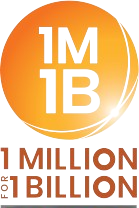[SINGAPORE] With US tariffs raising recession fears, economists now expect the Monetary Authority of Singapore (MAS) to support growth by easing policy on Apr 14, and possibly in July – a view previously held by a minority.
In January, MAS slightly reduced the slope of the Singapore dollar nominal effective exchange rate (S$NEER) policy band for the first time since 2020.
In a February survey of professional forecasters by MAS, only 15.8 per cent of respondents expected another slope reduction in April, and 29.4 per cent expected one in July.
After Trump’s announcement, many economists lowered their own full-year growth forecasts, and revised their calls to expect another MAS easing in April.
BT in your inbox
Start and end each day with the latest news stories and analyses delivered straight to your inbox.
Slight or sharp easing?
Most expect a “slight” slope reduction of 50 basis points (bps), including Citi, HSBC, Maybank, OCBC, Standard Chartered and UOB.
Their forecasts for full-year growth range from UOB’s 1.5 per cent to HSBC’s 2.6 per cent.
“Inflation has consistently undershot the lower band of the MAS’ forecast range of 1 to 2 per cent since the start of 2025, paving the way for MAS to tilt its focus even more toward supporting growth,” wrote HSBC economists Liu Yun, Joey Chew and Tan Pin Ru in an Apr 3 note.
UOB associate economist Jester Koh noted that Singapore’s growth is likely to run below potential in 2025, implying a moderately negative output gap.
This is in contrast to MAS’ January expectation that Singapore’s output for 2025 would be close to potential.
While Koh’s base case is a slight slope reduction, he and other economists flagged the risk that MAS could ease more sharply in April, turning the S$NEER slope neutral.
In an Apr 9 note, StanChart economists Edward Lee and Jonathan Koh said “the risk of moving to a flat slope has increased”, as US-China trade tensions escalate.
Going further, Barclays has shifted its base case to a 100-bp reduction in April, from an earlier expectation of 50 bps.
Said Barclays economists Brian Tan and Audrey Ong: “MAS will likely now view a return of the output gap to negative territory as a given – good enough reason, in our view, for a swifter return to a zero slope in a single 100-bp adjustment, rather than two incremental 50-bp moves.”
Similarly, OCBC economists Christopher Wong and Frances Cheung said in an Apr 10 note that they would not rule out a flattening of the policy slope, if the assessment of both external and domestic growth turns sharply negative or enters crisis territory.
“The last time the S$NEER policy band was flat was during (the) Covid (pandemic) period and in April 2016 when the external environment was assessed to be less favourable,” they said.
Recentring and widening
The Barclays economists also see “a relatively high likelihood” of a downward recentring of the band, on top of that reduction.
They believe the US announcement “will meet MAS’ definition of a ‘shock’ – historically a prerequisite for the central bank to re-centre the S$NEER policy band”.
A downward recentring implies a more fundamental downgrade of Singapore’s growth and inflation outlook.
“However, as worried as senior policymakers may seem, we believe it is too early for MAS to commit to a downward recentring,” added the Barclays economists.
They also noted the risk that MAS might widen the policy band – a move taken to account for greater volatility – but considered this likelihood relatively low.
In contrast, the StanChart economists do not expect a recentring – which would mean an outright devaluation of the Singdollar – “as a sharp depreciation of currency while negotiating with the US may not be viewed positively by the US Treasury”.
More easing to come
If not in April, some economists expect the policy band slope might be lowered further to reach neutrality in the second half of 2025.
Citi economist Kit Wei Zheng expects a slight reduction in April to be followed by another in July – when second-quarter growth data is available – that will take the slope to zero.
Downward recentring after a shift to zero slope is possible, he added. But since this implies devaluation, “the bar for such a move would be arguably higher than before, requiring clear signs of a step down in the hard data, and likely job losses”.
UOB similarly expects a two-step reduction, though the second step could come in either July or October.
Other economists are less certain. HSBC does not rule out further easing past April, but that is not its base case.
Said the Maybank economists: “We cannot rule out MAS easing to neutral in the second half, in the event of a technical recession.”




